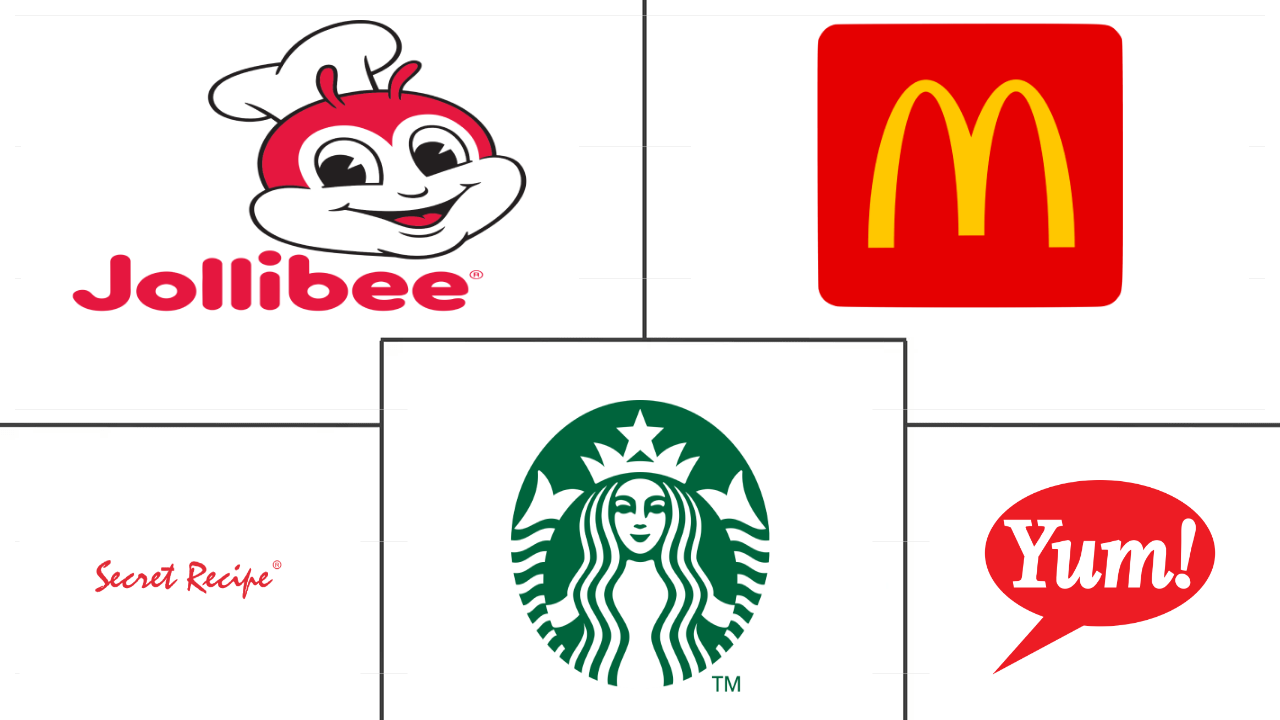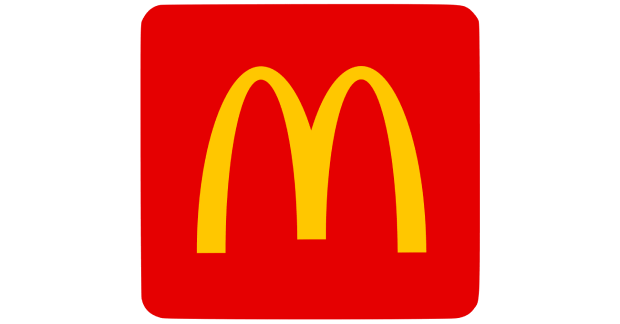Market Size of southeast asia foodservice Industry
| Icons | Lable | Value |
|---|---|---|
|
|
Study Period | 2017 - 2029 |
|
|
Market Size (2024) | USD 192.43 Billion |
|
|
Market Size (2029) | USD 349.05 Billion |
|
|
Largest Share by Foodservice Type | Quick Service Restaurants |
|
|
CAGR (2024 - 2029) | 12.65 % |
|
|
Largest Share by Country | Indonesia |
|
|
Market Concentration | Low |
Major Players |
||

|
||
|
*Disclaimer: Major Players sorted in no particular order |
Southeast Asia Foodservice Market Analysis
The Southeast Asia Foodservice Market size is estimated at 192.43 billion USD in 2024, and is expected to reach 349.05 billion USD by 2029, growing at a CAGR of 12.65% during the forecast period (2024-2029).
192.43 Billion
Market Size in 2024 (USD)
349.05 Billion
Market Size in 2029 (USD)
4.65 %
CAGR (2017-2023)
12.65 %
CAGR (2024-2029)
Largest Country
24.11 %
value share, Indonesia, 2023
International chains have recently expanded their presence in the country and extensive networks of food delivery apps, such as GrabFood and GoFood, expose various independent outlets to their target consumer base, acting as drivers for the Indonesian market.
Fastest-growing Country
17.58 %
Projected CAGR, Singapore, 2024-2029
Increased demand for convenience and standardized quality, along with presence of digital ordering platforms are poised to dominate the foodservice landscape in Singapore.
Largest Segment by Foodservice Type
42.86 %
value share, Quick Service Restaurants, 2023
The growing middle class and an increase in disposable income, as well as a desire for convenience and socialization, are ensuring the continued popularity of QSR in the region.
Fastest-growing segment by Foodservice Type
18.95 %
Projected CAGR, Cloud Kitchen, 2024-2029
The rise of online food ordering platforms, changing consumer behavior, and growing demand for flexibility are helping cloud kitchen to be the fast-growing segment.
Leading Market Player
1.08 %
market share, McDonald's Corporation, 2022

McDonald’s is the market leader, sells more than 75 hamburgers every second, and its famous golden arches are recognized by millions. The chain has 34,000 restaurants in 119 countries.
Advent and penetration of major multi-national chains to attract multi-ethnic consumer groups in the country is propelling growth
- Quick service restaurants (QSRs) are prevalent in Southeast Asia and are a significant part of the region's food and beverage industry. Major QSR chains in Southeast Asia include McDonald's, KFC, Subway, Burger King, and Pizza Hut. These chains have a strong presence in the region, with many locations in urban areas, shopping malls, and transportation hubs. Apart from the global chains, the region has seen the emergence of the QSR industry with the rise of local QSR chains. These regional chains often offer unique menu items that cater to local tastes and preferences, such as Jollibee in the Philippines and Lotteria in Vietnam. Hence, quick service restaurants in Southeast Asia are anticipated to register a CAGR of 13.47%, by value, during the forecast period.
- Cloud kitchens are anticipated to register the fastest growth in Southeast Asia, with a CAGR of 18.90%, by value, during the forecast period. The rise in the usage of food delivery applications is boosting the growth of cloud kitchens. Nearly 60% of consumers in Southeast Asia ordered from food delivery applications in 2021. The COVID-19 pandemic has also accelerated the development of cloud kitchens in the region, as many traditional restaurants had to shut down due to lockdowns and social distancing measures.
- In Southeast Asia, full service restaurants offer a wide range of cuisines, including local and regional specialties and international options, such as Italian, French, and Japanese cuisines. Many full service restaurants also feature live music, entertainment, and themed events to attract customers. Hence, full service restaurants in the Southeast Asian region are anticipated to register a CAGR of 11.92%, by value, during the forecast period.
Owing to a thriving tourism industry and preference among visitors to taste traditional dishes assisted Indonesia in dominate
- Indonesia holds the major share of the market. In the study period, it is expected to register a CAGR of 13.42% by value. Indonesia's thriving tourism industry has contributed significantly to the food service market's growth. Tourism numbers increased through 2022 as travel restrictions were curtailed, with Thailand receiving a total of 5.47 million foreign visitors. The country receives millions of tourists every year, and many of them visit the country to experience its cuisine. Indonesian food offers a unique culinary experience that combines traditional techniques with modern twists, making it a favorite among food enthusiasts.
- Singapore is the fastest-growing country in the market. It is expected to register a CAGR of 17.62% during the forecast period. Singapore has a strong food culture and a diverse Indian population that has resulted in a fusion of different cuisines. The proportion of Indian professionals in Singapore was 26% by 2020. The Singapore government has been actively promoting the food service industry through initiatives such as the Singapore Food Festival, which showcases local cuisine and promotes Singapore as a culinary destination.
- Thailand is the second major market in this sub-segment. Asian cuisine held the major share of 10.24% of the Thai market in 2022. Asian cuisine, particularly Chinese, Japanese, and Korean cuisine, has been growing in popularity. Thailand has a large Chinese community, which has led to the popularity of Chinese cuisine in the country. In 2023, 10-12% of the population in Thailand were of ethnic Chinese descent. Chinese cuisine has been adapted to suit Indonesian taste preferences, resulting in a fusion of Chinese and Indonesian flavors.
Southeast Asia Foodservice Industry Segmentation
Cafes & Bars, Cloud Kitchen, Full Service Restaurants, Quick Service Restaurants are covered as segments by Foodservice Type. Chained Outlets, Independent Outlets are covered as segments by Outlet. Leisure, Lodging, Retail, Standalone, Travel are covered as segments by Location. Indonesia, Malaysia, Philippines, Singapore, Thailand, Vietnam are covered as segments by Country.
- Quick service restaurants (QSRs) are prevalent in Southeast Asia and are a significant part of the region's food and beverage industry. Major QSR chains in Southeast Asia include McDonald's, KFC, Subway, Burger King, and Pizza Hut. These chains have a strong presence in the region, with many locations in urban areas, shopping malls, and transportation hubs. Apart from the global chains, the region has seen the emergence of the QSR industry with the rise of local QSR chains. These regional chains often offer unique menu items that cater to local tastes and preferences, such as Jollibee in the Philippines and Lotteria in Vietnam. Hence, quick service restaurants in Southeast Asia are anticipated to register a CAGR of 13.47%, by value, during the forecast period.
- Cloud kitchens are anticipated to register the fastest growth in Southeast Asia, with a CAGR of 18.90%, by value, during the forecast period. The rise in the usage of food delivery applications is boosting the growth of cloud kitchens. Nearly 60% of consumers in Southeast Asia ordered from food delivery applications in 2021. The COVID-19 pandemic has also accelerated the development of cloud kitchens in the region, as many traditional restaurants had to shut down due to lockdowns and social distancing measures.
- In Southeast Asia, full service restaurants offer a wide range of cuisines, including local and regional specialties and international options, such as Italian, French, and Japanese cuisines. Many full service restaurants also feature live music, entertainment, and themed events to attract customers. Hence, full service restaurants in the Southeast Asian region are anticipated to register a CAGR of 11.92%, by value, during the forecast period.
| Foodservice Type | ||||||||||
| ||||||||||
| Cloud Kitchen | ||||||||||
| ||||||||||
|
| Outlet | |
| Chained Outlets | |
| Independent Outlets |
| Location | |
| Leisure | |
| Lodging | |
| Retail | |
| Standalone | |
| Travel |
| Country | |
| Indonesia | |
| Malaysia | |
| Philippines | |
| Singapore | |
| Thailand | |
| Vietnam | |
| Rest of Southeast Asia |
Southeast Asia Foodservice Market Size Summary
The Southeast Asia foodservice market is experiencing significant growth, driven by the increasing popularity of quick service restaurants (QSRs) and the rapid expansion of cloud kitchens. QSRs, such as McDonald's, KFC, and local chains like Jollibee and Lotteria, are prevalent in urban areas and are a major component of the region's food and beverage industry. The emergence of cloud kitchens, fueled by the rise in food delivery app usage, is expected to register the fastest growth. The COVID-19 pandemic has further accelerated this trend as traditional restaurants adapted to new consumer behaviors. Full service restaurants (FSRs) also play a crucial role, offering a diverse range of cuisines and experiences to attract customers.
Indonesia holds a significant share of the market, with its thriving tourism industry contributing to the growth of foodservice establishments. Singapore is noted as the fastest-growing market, with a strong food culture and government initiatives promoting culinary tourism. Thailand's market is characterized by the popularity of Asian cuisines, particularly Chinese, due to its large Chinese community. The market is fragmented, with major players like Jollibee Foods Corporation, McDonald's, and Starbucks Corporation. The region's foodservice industry is evolving with new technologies and services, catering to changing consumer preferences and the increasing demand for convenience.
Southeast Asia Foodservice Market Size - Table of Contents
-
1. MARKET SEGMENTATION (includes market size in Value in USD, Forecasts up to 2029 and analysis of growth prospects)
-
1.1 Foodservice Type
-
1.1.1 Cafes & Bars
-
1.1.1.1 By Cuisine
-
1.1.1.1.1 Bars & Pubs
-
1.1.1.1.2 Cafes
-
1.1.1.1.3 Juice/Smoothie/Desserts Bars
-
1.1.1.1.4 Specialist Coffee & Tea Shops
-
-
-
1.1.2 Cloud Kitchen
-
1.1.3 Full Service Restaurants
-
1.1.3.1 By Cuisine
-
1.1.3.1.1 Asian
-
1.1.3.1.2 European
-
1.1.3.1.3 Latin American
-
1.1.3.1.4 Middle Eastern
-
1.1.3.1.5 North American
-
1.1.3.1.6 Other FSR Cuisines
-
-
-
1.1.4 Quick Service Restaurants
-
1.1.4.1 By Cuisine
-
1.1.4.1.1 Bakeries
-
1.1.4.1.2 Burger
-
1.1.4.1.3 Ice Cream
-
1.1.4.1.4 Meat-based Cuisines
-
1.1.4.1.5 Pizza
-
1.1.4.1.6 Other QSR Cuisines
-
-
-
-
1.2 Outlet
-
1.2.1 Chained Outlets
-
1.2.2 Independent Outlets
-
-
1.3 Location
-
1.3.1 Leisure
-
1.3.2 Lodging
-
1.3.3 Retail
-
1.3.4 Standalone
-
1.3.5 Travel
-
-
1.4 Country
-
1.4.1 Indonesia
-
1.4.2 Malaysia
-
1.4.3 Philippines
-
1.4.4 Singapore
-
1.4.5 Thailand
-
1.4.6 Vietnam
-
1.4.7 Rest of Southeast Asia
-
-
Southeast Asia Foodservice Market Size FAQs
How big is the Southeast Asia Foodservice Market?
The Southeast Asia Foodservice Market size is expected to reach USD 192.43 billion in 2024 and grow at a CAGR of 12.65% to reach USD 349.05 billion by 2029.
What is the current Southeast Asia Foodservice Market size?
In 2024, the Southeast Asia Foodservice Market size is expected to reach USD 192.43 billion.

